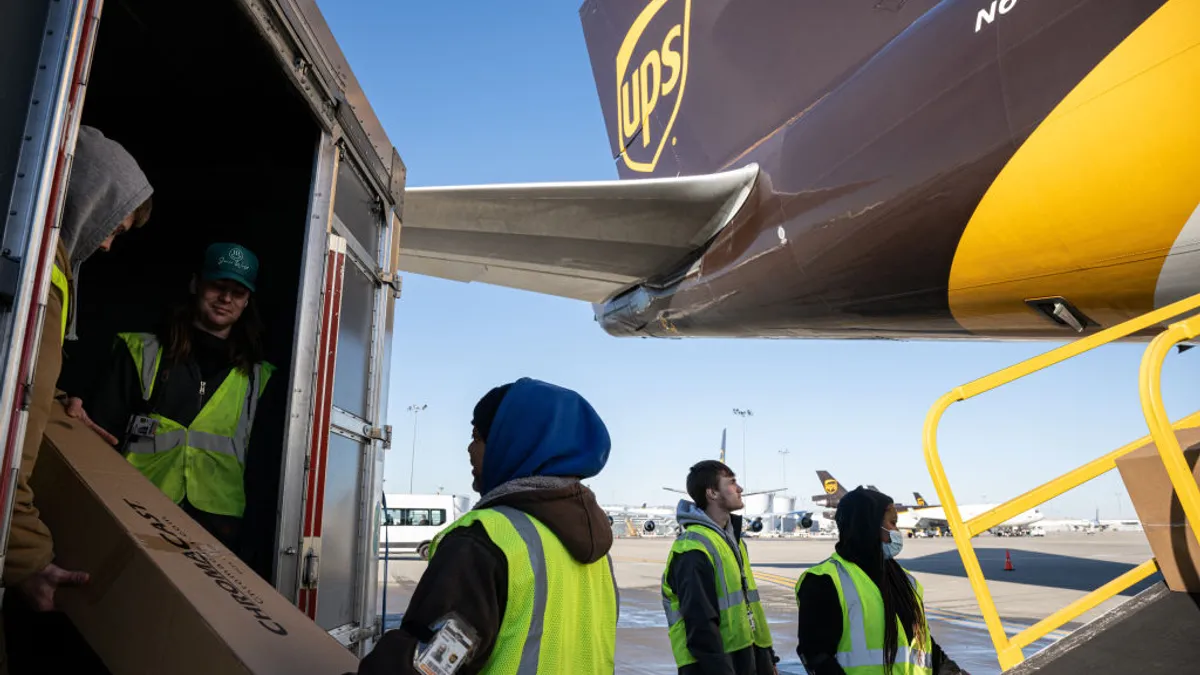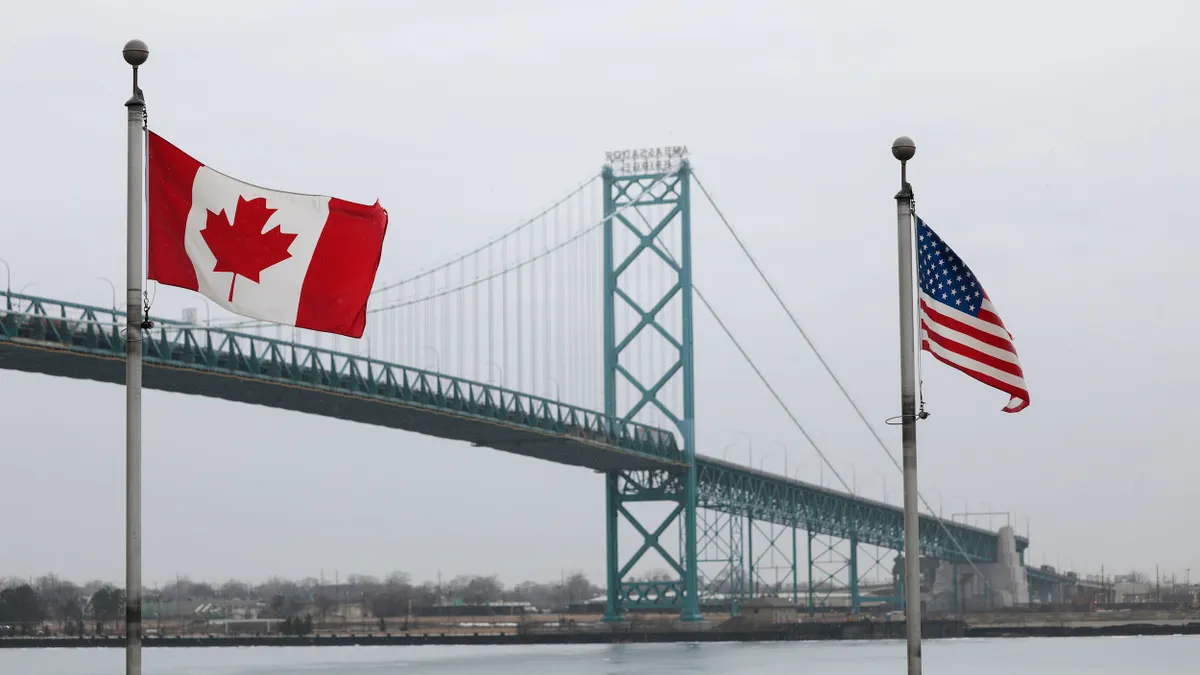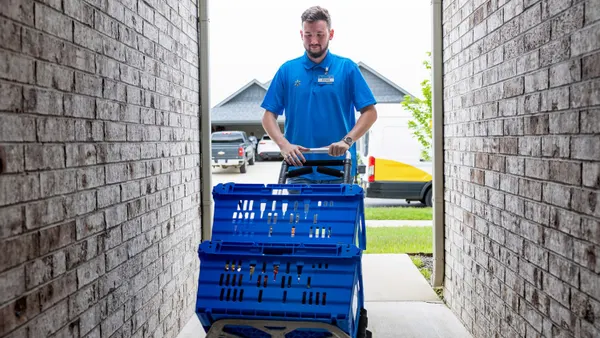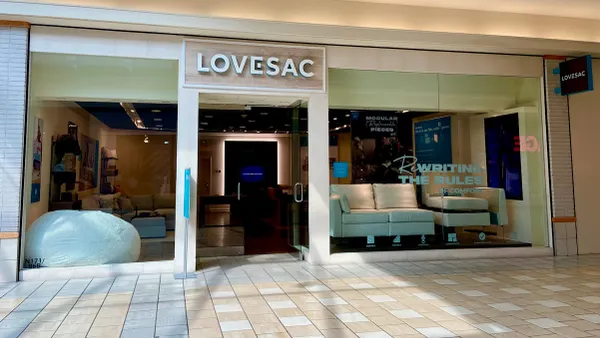Dive Brief:
- UPS' top U.S. customers are exploring several options in the face of tariff pressures, from passing added expenses onto consumers to pushing for help from suppliers, CEO Carol Tomé said on a Q1 earnings call Tuesday.
- One popular tactic among larger shippers has been inventory frontloading to ship products before new tariffs apply, according to Tomé. This trend contributed to a 9.5% year-over-year increase for U.S.-destined international volume in Q1.
- However, CFO Brian Dykes said UPS expects demand to soften on the key China-to-U.S. trade lane in Q2 as tariffs weigh heavily on trade between the two countries. The lane represented 11% of UPS' international revenue last year, compared to 17% for all other countries' shipments into the U.S.
Dive Insight:
While larger importers have more resources to mitigate tariff-related issues, Tomé said the outlook is different among small- and medium-sized businesses.
Many of these shippers source 100% of their products from China, according to Tomé. The combination of 145% tariffs on China imports into the U.S. and the May 2 elimination of the de minimis exemption for China and Hong Kong is "causing so much uncertainty in the marketplace" as a result.
Smaller businesses also don't have the ability to aggressively pull forward inventory like large shippers do, Tomé said. Instead, they're focusing on finding solutions with their manufacturers and looking to move sourcing to other countries, like Mexico or nations in Southeast Asia.
"We're seeing Asia, Vietnam, Thailand also to the U.S. growing exports near double-digits," said Kate Gutmann, UPS' EVP and President of International, Healthcare and Supply Chain Solutions, on the call. "So, I would tell you that it's shifting. It's already occurring."
While small businesses are scrambling for alternatives, they face an uphill battle. Gutmann noted that larger companies get the first crack at securing capacity with manufacturers.














